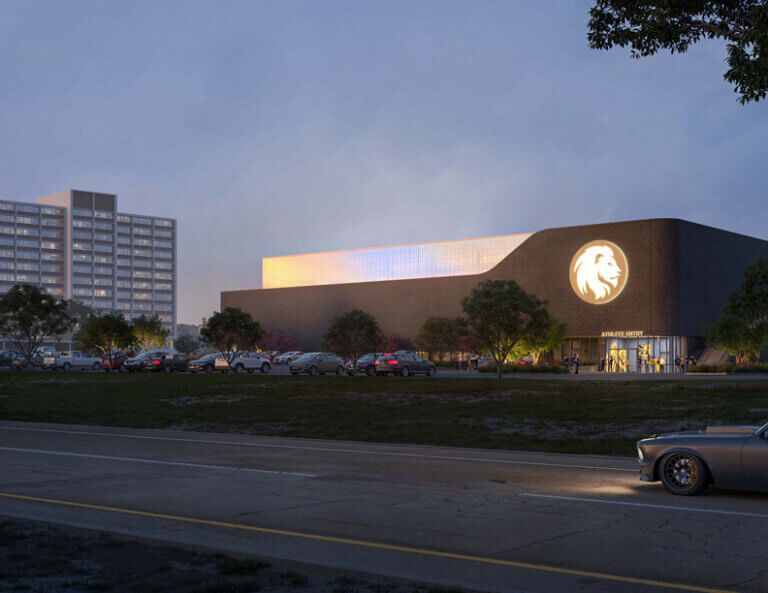
This article originally appeared in Healthcare Facilities Today.
There is a high demand for hospital space, and in today’s every changing market conditions, it is critical to choose a building partner early on in the planning process. Working together in the early stages of design can help control costs and keep the building schedule on time. With inflation at an all-time high for every single industry, it is important to have someone on the team to help with the probability of unexpected costs.
Healthcare Facilities Today recently spoke with Chase Mintrone, healthcare senior superintendent, Hoar Construction on how facilities managers can best work with partners to plan for costs on new constructions and renovations.
HFT: How can facilities managers establish and maintain relationships with partners, such as contractors, architects, and suppliers, during the construction or renovation process?
Mintrone: Early engagement with the project team will help solidify a strong relationship. This early collaboration is critical for the entire team to build on this relationship for several reasons. First, is building trust in the processes to aid in coordination efforts while maintaining effective communication to ensure smooth transitions. Actively engaging with the design and project teams keeps the communication line freely flowing, allowing an openness between the players. This allows the suppliers, design team, and construction team the ability to quickly coordinate and resolve issues, keeping the owner fully abreast of the process.
HFT: What is the best approach to managing project budgets and controlling costs during new construction or renovations?
Mintrone: Early coordination and thoughtful value engineering. By getting the project team involved early to fully understand the needs of the facility and the logistics of the affected area, you can get down to the nuts and bolts before the commencement of a project to dial in the costs. This holds true for any required VE, as an early approach allows thoughtful design changes to reduce a budget. One of the largest budget killers to any project is late design changes and/or add-ons. Engaging the user group stakeholders early on can be a pivotal step in reducing this issue. Far too often we see even the smallest changes, like additional power/data outlets, that can quickly escalate to sizeable cost impacts. With some earlier internal coordination, these decisions can be made and included in the construction documents (CDs).
HFT: How can facilities managers handle unexpected cost overruns or changes in project scope during the construction or renovation process?
Mintrone: Hold the design team accountable for a thorough review of the documents between design disciplines. Ensuring that the design team provides a thorough QA/QC process for the construction documents could be a pivotal step in reducing some of the changes in the project scope. Particularly, an internal coordination review of the MEP and the architectural drawings would give the design team a leg up in making certain that systems and design align, major required components are not missed, and design intent is maintained. Nobody has a crystal ball and there is always a high potential for at least some changes to occur during any project, but arming yourself with a solid plan can play a key role in mitigating changes in scope.
HFT: What measures are taken to ensure the safety of workers and occupants during construction or renovation activities?
Mintrone: Creating a solid safety and logistics plan is critical to the safety of workers, staff, and the public for any project. Ensuring that the construction routing plan aligns with an ICRA plan is vital, but also ensuring that it supports the operations of the affected area is equally important. In addition, it’s crucial to share these plans with the user group as these folks know the area most intimately and can provide valuable insight into the plan. Executing the plan or simply doing what you say you will do, is the best first defense in maintaining the safety of everyone. Having a strict PPE plan is important to building a culture of safety that keeps workers safe. Ensuring that owner reps, inspectors, vendors, and visitors are held to the same PPE standard reinforces that message. Finally, having an in-depth understanding of the ICRA documents is critical for maintaining staff and public safety.
HFT: How can technology and data be leveraged in the planning and execution of construction or renovation projects to best optimize costs and efficiency?
Mintrone: Having good as-built drawings and historical cost data can both be pivotal on the front end of a project, ensuring a cost metric is in line and that a construction execution plan goes accordingly. Building Information Modeling (BIM) has been a massive benefit to the industry, giving teams the best chance to mitigate design changes early on and providing the best landscape for an efficient plan. Utilizing construction management software like Procore provides an opportunity for all stakeholders in a project to mitigate risk, ensure efficient workflow through document control, and ensure seamless communication. It is my experience that early investment in these practices gives the best ROI for any project.
HFT: What contingency plans should facilities managers have in place to address unforeseen challenges or delays in construction or renovation projects?
Mintrone: Having an in-depth understanding of the above ceiling conditions, prior to construction, can be a vital planning step in minimizing “unforeseen” costs when dealing with expansion or renovation projects. This would allow the facility to have a solid contingency budget to cover such items and possibly reduce or minimize the need to seek additional funds for a project.
HFT: How can managers evaluate the performance and quality of partners involved in construction or renovation projects?
Mintrone: It is important to measure trade partners’ engagement and buy-in into the project. There are times when a partner may exceed expectations on a large project and completely underperform on a smaller renovation. Documenting the historical data for trade partner performance is an absolute must because no matter the size of the project, they are equally important. Having consistency is a key stepping-stone to repeatable successful projects.

